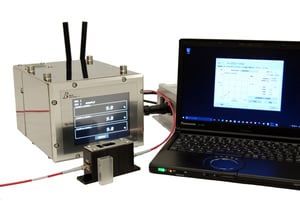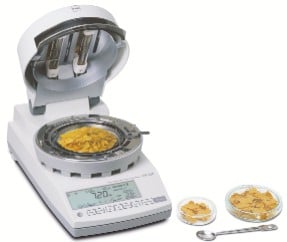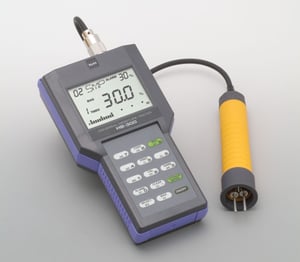When something happens in our little world of composition analyzers, we have a hard time maintaining our cool. It’s exciting when new developments refine these analyzers so that readings become quicker, more accurate and more sensitive.
Our newest composition analyzers have us working pretty hard to keep our cool. And why is that? Because they have fiber-optic systems, making them faster than ever. Why should you be as excited as we are about these newest models? Let’s take a look.
And why is that? Because they have fiber-optic systems, making them faster than ever. Why should you be as excited as we are about these newest models? Let’s take a look.
What Does Fiber-Optic Technology Mean?
Fiber-optic cables have revolutionized a lot of the things we use every day— for example, phone cables, internet cables, cable television and much more. It’s used everywhere in our everyday life now. So how do they actually work?
Optical fibers are made of thin optically pure strands of glass that are about the diameter of a strand of human hair. These strands are arranged into bundles, and these bundles transport light signals and information very quickly.
If you were to look very, very closely at a single strand of optical fiber, you would see that it is made up of three parts:
- Core: This is the single, thin strand of glass that transmits light.
- Cladding: This outer optical material surrounds the core and reflects light directly back into the core.
- Buffer Coating: This is a plastic coating that protects the fibers from damage and moisture.
Hundreds and sometimes even thousands of these optical fibers are bundled together in optical cables and covered with a protective outer coating, known as a jacket.
And how does this technology work?
Think of it like shining a light down a long, long hallway. If the hallway is straight, the light immediately shines straight down the hallway with no issue. But if the hallway has a bend or turn in it or if it has multiple twists and turns? That light won’t shine all the way to the end of the hallway on its own.
This is where the glass optical fibers come into play. They act like tiny mirrors that bounce the light all the way down the cable, just like setting up a system of mirrors would bounce light all the way down to the end of the hallway.
The benefit here: What’s faster than light? Not much.
What Does This Mean for Composition Analyzers?
Again: What’s faster than light? Using fiber-optic technology means you get instantaneous results. Take for example our new model, the BS-F1000, the Compact Fiber BeatSensor, and the similar BS-F1700.
To provide measurement values, these near-infrared composition analyzers do require a calibration curve to be initially established, but once the calibration curves are ready, a sample can be tested in the same amount of time it takes to shine a light down a hallway.
Using both transmission and reflection as sensing methods, your readings are ready faster than ever before. And with wired and wireless LAN technology, that measured data can go anywhere you need it to be. It’s that fast—and that’s why we are so excited about it.
It’s incredibly fast.
Measurements can be macro organics (moisture, protein, oil/fat, alcohol/solvent, sugar, etc.) similar to our KJT270F. However, since the BSF instruments utilize scanning spectrometers, they can also measure similar organics components. Examples would be ethanol vs.methanol, three different oils in a blend, an active pharmaceutical (API) in a fluid bed dryer, amounts of different flavors in a food coating... the list can go on forever!.
Both models can be used in a desktop setting (laboratory or near-line). Both the BS-F1000 and the BS-F1700 models have optional probes that are also available to take readings of vials, bifurcated fibers, glass cells and flow cells.
They can also be installed on the production line to provide instant, real-time measurement of multiple organic components. With the fiber-optic capabilities, installations will work inside mixers, blenders, extruders, pneumatic and vacuum transfer lines as well as pipe-flow applications.
We are thrilled to update our composition analyzer offerings by adding these Compact Fiber Beat Sensors to array of measurement instruments. We think their speed and accuracy make them unparalleled in the field of composition analyzers.
Do you have questions about what these new composition analyzers can mean for you? Contact us today, and let’s talk fiber optics!



